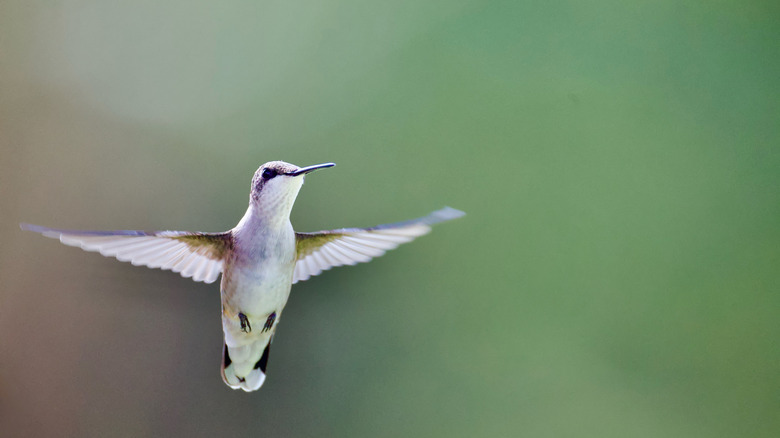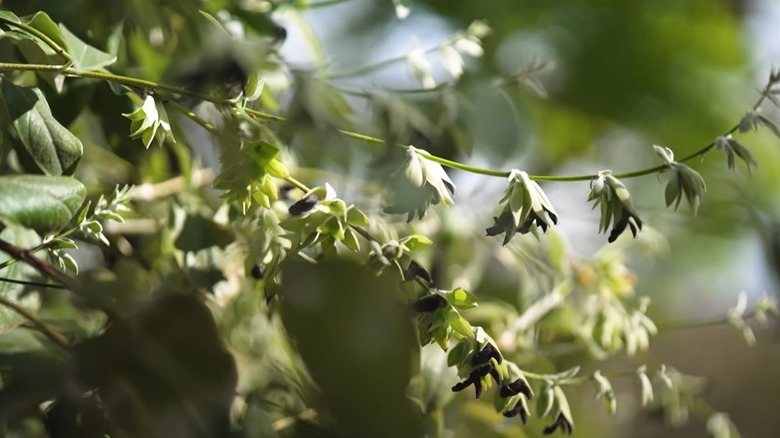The Indigo-Blue Flower That'll Have Hummingbirds Flocking To Your Yard
Aside from filling your garden with life and color, hummingbirds can offer a variety of benefits. First and foremost, these nectar-eating birds are essential pollinators, helping flowering plants thrive. However, they offer other benefits as well. For example, while nectar is a big part of their diet, hummingbirds eat insects as well. As a result, they can help control the bugs and spiders in your yard. If you're looking for ways to attract more of these helpful birds to your garden for an extra hand — or just to enjoy their jewel-like appearance — then adding flowers that can transform your space into a hummingbird haven can be a great place to start.
Salvia plants are a favorite among hummingbirds, and Andean sage (Salvia discolor) is no exception. These Peruvian plants can grow up to three feet in height while producing unique deep purple or even black tubular flowers that hummingbirds love. Even without the ability to potentially draw hummingbirds to your yard or garden, Andean sage can be a great choice for gardeners looking for a dramatic, show-stopping plant to add to their lineup. Before purchasing seeds to start Andean sage in your yard, however, it's important to learn about the care requirements for this evergreen shrub. This includes familiarizing yourself with everything from its optimal growing conditions to its day-to-day maintenance.
How to grow Andean sage in your garden
The first step for growing Andean sage to start a pollinator garden with hummingbirds in mind is to choose the right growing spot. In some regions, this plant may be considered invasive or an aggressive grower, so make sure to research your location before getting started. Andean sage is only hardy in USDA zone 9, and it requires well-draining soil with ample sunlight. Aim for a spot in your garden that receives at least a few hours of sunlight each day, with preferred conditions ranging from partial shade to full sun.
One thing to keep in mind when adding Andean sage to your landscaping is that it's a slow-growing plant. While this means that it can take some time before you can enjoy its pollinator-friendly benefits, it also means that day-to-day care can be a bit easier than with some plants. For example, its slow growth, paired with its tolerance for heat and drought, means that your Andean sage plant needs little water. It also doesn't require much pruning, with the ideal time being in the spring or directly after its flowering period, which can last from June to October. With this period in mind, Andean sage can be a great garden addition if you want to enjoy blooms later in the year, as well as provide hummingbirds with fall fuel as they prepare for migration.

